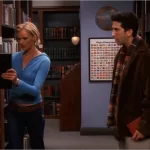Emergency Declaration: Never Let Go, by David Bax

Han Jae-rim’s Emergency Declaration is an action movie (among other things) but not in the scrappy and/or slick way that implies a lot of choreographed hand to hand combat or bouts of gunplay. No, it’s more of a throwback to the big budget American studio mainstream action films of the 1990s, evoking overpowering thrills and visceral tension via professional filmmaking and very expensive machinery and effects. Emergency Declaration is an action movie in the way Titanic is an action movie.
Also like Titanic, Emergency Declaration is a disaster movie. That’s its chief mode, in fact, and in the early going, it follows that playbook to the letter, introducing us one by one to the characters all headed for the same fateful commercial flight, allowing us to wonder who will survive, who will perish and who will help save the day. Given that the plot revolves around a kind of terrorist attack by a lone psychopath, it’s remarkably reminiscent of 1976’s Two-Minute Warning, except on an airplane instead of in a football stadium and, you know, actually a good movie.
That’s because Emergency Declaration isn’t just some passively sadistic excuse to see characters killed off in spectacular ways. There’s a deep sense of empathy for these people and, at two hours and twenty minutes, the movie is an endurance test of suspense (which is meant as a high compliment, to be clear). Aiding us in our armrest-clenching queasiness is the foreboding, dissonant score by Lee Byung-woo, known for his work with Bong Joon-ho on The Host and Mother.
But the main reason Emergency Declaration is so nerve-racking is that it, quite knowingly, speaks directly to modern anxieties. A terrorist attack on a plane is, of course, going to recall the events of September 11th, 2001 (and highlight the fact that South Korea apparently does not use air marshals). And the matter of a lone madman threatening scores of innocent civilians obviously has its own relevance, especially to Americans in recent years (a newscast in the film employs actual footage from the 2017 Las Vegas shooting to make a point that, in this country, doesn’t need any such explanation). But what I haven’t yet said is that this particular attack is biological; the killer unleashes a virus in the airplane’s cabin. As those on board frantically don masks and gloves while the scientists on the ground ponder mutations and search for vaccines, Emergency Declaration goes from action movie to disaster movie to all-too-real horror.
In its own way, the cinematography by Lee Mo-gae and Park Jong-chul adds to these tensions (while remaining quite beautiful). The lens flares and haze seem at first to be mere aesthetic flourishes but they serve a more specific purpose. In a situation in which the threat is airborne and invisible, these choices make the air itself visible, weighty and tactile.
As mentioned earlier, though, Han is not engaging his talents simply to punish viewers with bleak and harrowing vibes. Though we do get some warranted cynicism in the film’s depiction of international noncooperation, Emergency Declaration is ultimately a tribute to the virtues of selflessness and collective action.





























